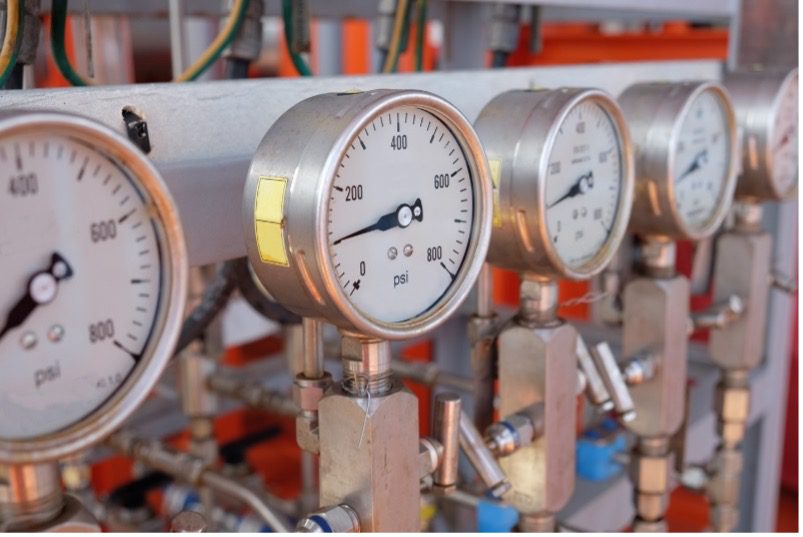
The technology used in differential pressure gauges has existed for more than a century, and today the pressure gauge remains one of the most common methods of pressure measurement. The question of how to choose the right pressure gauge is an important one and depends on several variables. Read about picking the right differential pressure gauge below.
Learn about Differential Pressure Gauges
What are Pressure Gauges Used For?
Pressure gauges are used for monitoring liquids and gas pressure in applications such as hydraulics and pneumatics, medical, pumps and compressors, refrigeration controls, utilities, and gas monitoring. Along with incorporating a standard visual pressure indication, certain pressure gauges can be configured to provide electrical output to monitor other variables such as temperature.
Factors to Consider When Picking a Pressure Gauge
There are many factors to consider when picking a pressure gauge. Here we’ve summarized several of the most important.
Pressure Range
A gauge range of twice the working pressure is recommended for maximum accuracy, safety, and gauge life. The operating pressure should always be limited to 75% of the gauge range. When pressure pulsations are encountered, the operating pressure should be limited to two-thirds of the gauge range.
Temperature Range
The temperature range for soft-soldered general equipment gauges is between -40ºF to 120ºF. For process gauges that are silver soldered or welded, the temperature range is -40ºF to 190ºF. For liquid-filled gauges, the typical range is 0ºF to 140ºF.
Pressure Fluid Temperature
Steam and other hot mediums could raise the temperature of the pressure gauge’s components above the safe working limits of the sealed joints. In such cases, it’s recommended that a siphon or chemical diaphragm seal be used with the pressure gauge. These seals, as well as remote armored capillary tubing, can also be used with gauges that are subjected to very low or high ambient temperatures.
Accuracy Levels
A pressure gauge should be selected based on the accuracy requirements of the production process. The accuracy levels of the most commonly used pressure gauges are: 0.05, 0.1, 0.25, 0.4, 1.0, 1.5, and 2.5. The maximum allowable error depends on the range of the pressure gauge and the percentage of accuracy level. The error value should never exceed the accuracy required by the application.
Vibration
Vibration can significantly impact gauge performance. Exposure to continuous vibration is one of the most common causes of pressure gauge failure. Vibration due to pumps, motors, and other rotating equipment can cause excess wear and lead to possible premature failure of the internal working parts of a pressure gauge. Chief among these parts is the Bourdon tube and the movement or gear mechanism. Vibration also causes pointer oscillation, which makes it difficult to get an accurate reading from a gauge.
Mid-West Instrument
Since 1958, Mid-West Instrument has been a leading global manufacturer of differential pressure gauges, transmitters, and switches. Our company is family owned and operated from our facility located in Sterling Heights, MI.
Our state of the art factory is equipped the latest CNC machine tool technology, test equipment, calibrations standards, and oxygen clean room. This allows us to maintain precise tolerances and product quality with the shortest lead times in the industry.
Contact our experienced professionals to learn which differential pressure instrument best fits your application.

